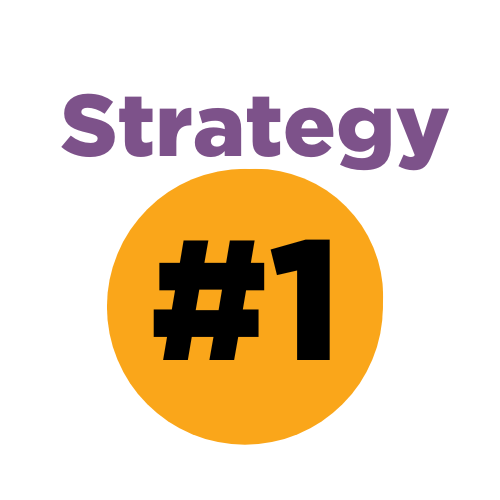Making the Disability Inclusion Connections in Your Business and Community: Five Practical, Powerful Strategies for Action

By Dean Askin | Charity Village, October 20, 2023
Making the disability inclusion connections to business and employment success is a three-stage process.
First, there’s grasping all the intertwined levels of connection. Second, there’s understanding the inter-related barriers to disability inclusion. Lastly comes bridge building: developing ways of making the connections happen so everyone involved benefits.
Business leaders who make all the disability inclusion connections will see their organizations grow and prosper. For disability-inclusive businesses, profit margins are 30% higher. Revenue increases 28%.
And, those business leaders are six times more likely to be running high-performing companies.
The numbers make it clear: making the disability inclusion connections on multiple levels is vital for the success of everyone involved.
But how do you make all the connections?
It’s important to have a plan; a strategy.
With this in mind, here are five powerful and practical strategies for making the disability inclusion connections in your business; and in the community your business serves.
Making all the disability inclusion connections is a long game. These five strategies are the beginning of the journey. They’re a solid starting point.

Invest in Disability Awareness and Confidence Training (DACT). It’s essential to start by raising awareness and increasing knowledge about disability — throughout your organization. It fuels your progress on the disability inclusion journey. Change happens with increased knowledge and awareness. Investing in DACT demonstrates your commitment to disability inclusion.
In the new remote/hybrid work environment, there are DACT options for both situations. There’s online DACT that’s self-paced. It’s a good choice if all your staff is remote, or you have many employees to put through DACT. If you’re operating a small-to-medium enterprise, an interactive, in-person training session may be your preference and more practical.
This training helps your employees understand:
- The diversity of disability. The most common disabilities are invisible. Over five million people in Canada — 13% of the population — have a hidden, limited mobility disability.
- The business benefits of disability inclusion, including the connections to:
- Profitability
- Growth
- Innovation
- Employee engagement and retention
- Disability etiquette in interactions. It comes down to “one simple piece of timeless wisdom,” as disability advocate Emily Ladau writes in her book, Demystifying Disability. “Treat others as you want to be treated.” “Always be respectful.” And always ask the person how they want to be addressed. In general, use “person first” language. But always ask.
- Myths and misconceptions about disability. These linger because there’s still a significant lack of disability awareness. They create attitudinal and employment barriers that hinder disability-inclusion progress. DACT will help create an inclusive culture across your organization.

Create an inclusive culture by revisiting your “three Ps” — all your policies, practices and procedures. They’re at the core of an organization-wide inclusive culture. Your three Ps define the culture of your business.
Review them all with accessibility and inclusiveness top of mind. This includes everything from standard operating procedures (SOPs), to job-aids (such as a checklist or quick-reference tip sheet), to how you hold staff meetings.
Some things to consider:

- Are policies and SOPs available and accessible in a variety of formats for staff?
- Can customers interact with you in a variety of ways that are accessible?
- Is there wording in your internal and external communications that may unintentionally exclude employees or customers who have a disability?
- Is there wording in your job postings that may unintentionally exclude either internal or external applicants who have a disability?
- Is your website — and company intranet, if you have one — accessible?
- Do you have specific policies supporting employees who have a disability?
- Do you encourage employees to disclose their disability? And do employees believe you’re being authentic about it? (Employees openly self-identify with a disability when they feel safe and comfortable doing so.)
Creating an inclusive culture by reshaping all your three Ps will help you:
- Retain existing employees, and attract new ones. Inclusion doesn’t just help you keep valuable employees who have a disability. It helps you keep employees, period. When your company culture is inclusive, people want to work for you. A Boston Consulting Group study found all employees are 50% more likely to stay with a company that really focuses on its people.
- Keep current customers, and attract new ones. Research shows that customers want to do business with inclusive businesses.

Form alliances with disability organizations in the community. Doing this does these things:
- It shows you’re sincere about making all the disability inclusion connections. Saying you’re committed to disability inclusion isn’t enough. You need to demonstrate it.
- It helps you reach new sources of talent; build your knowledge and awareness; and form long-term relationships that are mutually beneficial.
- It positions you as a community partner and supporter, not just as an employer in the community — which is good for the perception of your brand.
Disability organizations such as the Ontario Disability Employment Network, can:
- Provide valuable training, insights and resources to help you become more disability inclusive
- Facilitate introductions with community-based employment service providers that can help you with talent needs
Forming alliances like this helps drive disability inclusion forward. Businesses that are disability aware and confident, and community agencies, can collaborate on events and activities to educate others (see the Bonus Strategy — #6).

Be proactive and intentional about accessibility. Because your business should reflect the community it serves. And there are people who have a disability in every community — over one billion people (16% of the world’s population) have a disability.
“Disability inclusion is paramount in any modern business because it has never been more important to include everyone, and accessibility is the vehicle to inclusion,” affirms Kristina Michalsky, Microsoft’s General Manager for the U.K. and Ireland.
She made the statement in a 2022 report about U.K. disability consumer purchasing habits by the Business Disability Forum.
Two key elements of this strategy:
- Make all your facilities, processes, policies, communications, products and services fully accessible
- Tell people about the accessibility of them — as much as you can

You have to do both these things. Here’s what the U.K. report found: Consumers want information about the accessibility of products and services, as much as they expect the accessibility itself.
If you don’t provide enough information, you’ll lose business. In the report, 43% of consumers surveyed said they abandon a shopping experience when there’s too little accessibility information.
This affects more than your financial bottom-line profitability. It hurts your brand reputation. Many consumers who have an unsatisfying interaction, share their experience on social media.
Conversely, research shows that these things happen when you embrace disability inclusion by following this and other strategies:
- Sales grow 2.9 times faster and profits grow 4.1 times faster
- People want to work for you — employees will be 50% more likely to stay with the company
- People want to do business with you
- You open the door to a vast market — the global disability consumer market is over three billion people, or almost 10 times the population of North America
- Your employees will be more engaged
Adopting this strategy requires prioritizing accessibility. It means looking at everything. From your website design; to how you communicate with customers and employees; to whether there are accessible entrances.
Investing in a thorough audit and assessment by a certified accessibility professional is a good starting point. (You can find one by searching The International Association of Accessibility Professionals directory.) Or consider creating a Manager of Accessibility position in your business.
Accessibility is an integral part of creating an inclusive culture. It’s important to have the right mindset. Think of being intentional and proactive about accessibility as an investment in opportunities and possibilities.

Always include people who have a disability in every aspect of your business. One survey found that 83% of businesses have a formal program set up to help them understand and address the needs of the disability community.
Getting inclusive feedback is integral to following inclusive design principles. This strategy is intertwined with Strategy #4. The disability user point of view helps ensure accessibility of everything across your organization. Which ensures your business reflects the community it serves.
Disability input also drives innovation. That’s because many people who have a disability solve problems differently than others through their lived experience, notes transformational change leader and inclusion specialist, Mark Wafer.
“And that’s how innovation is created in the workplace,” says the Ontario Disability Employment Network Business Champion.
A bonus strategy — #6
Be a mentor. The conversation about disability inclusion has been going on in Canada for over a hundred years. There are still lingering myths and misconceptions about disability. They stem from a lack of awareness — despite decades of conversation and advocacy. So once you’ve made the disability inclusion connections, educate your customers, clients and community.
Become a champion of disability inclusion who can mentor other business people. Share your experiences and successes. Showcase your business’s dedication to disability inclusion. Motivate and encourage other business leaders to follow your lead. Become a role model to follow. By following this strategy, you’ll play an integral role in turning more conversation into more action on disability inclusion.
Making all the disability inclusion connections is a long game. These five practical and powerful strategies are the beginning of the journey. They’re a solid starting point. Here are a few more tips for making sure your business is disability inclusive. By following these strategies and tips, you’ll see positive outcomes and many benefits over time.
Dean Askin is the Communications Strategist for the Ontario Disability Employment Network.
About This Article:
A Life Worth Living has copied the content of this article under fair use in order to preserve as a post in our resource library for preservation in accessible format. Explicit permission pending.
Link to Original Article:https://charityvillage.com/making-the-disability-inclusion-connections-in-your-business-and-community-five-practical-powerful-strategies-for-action/

